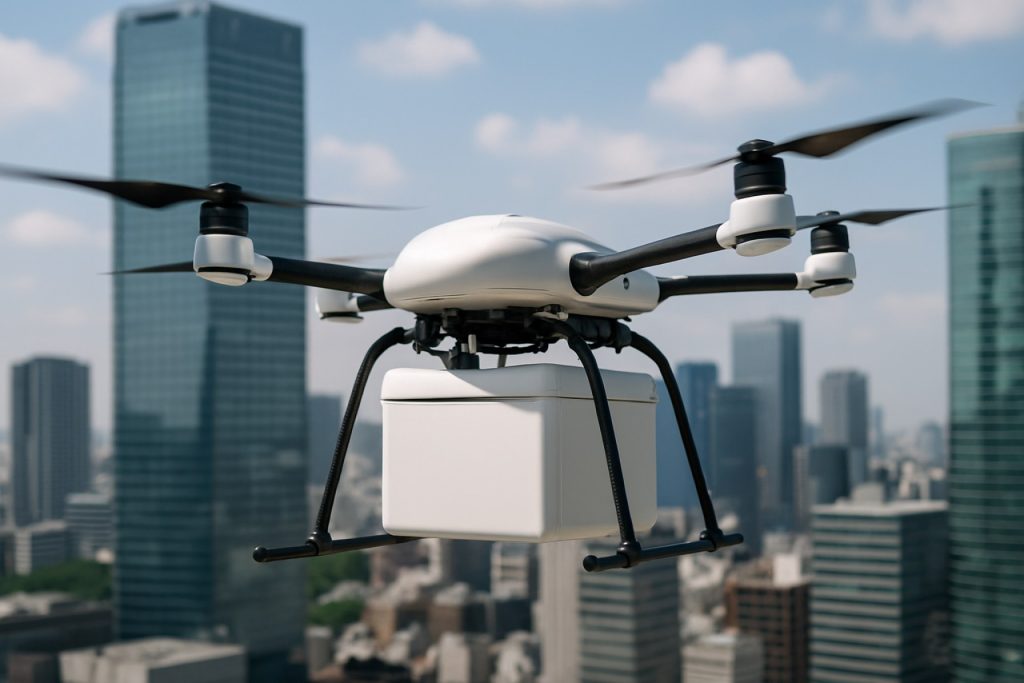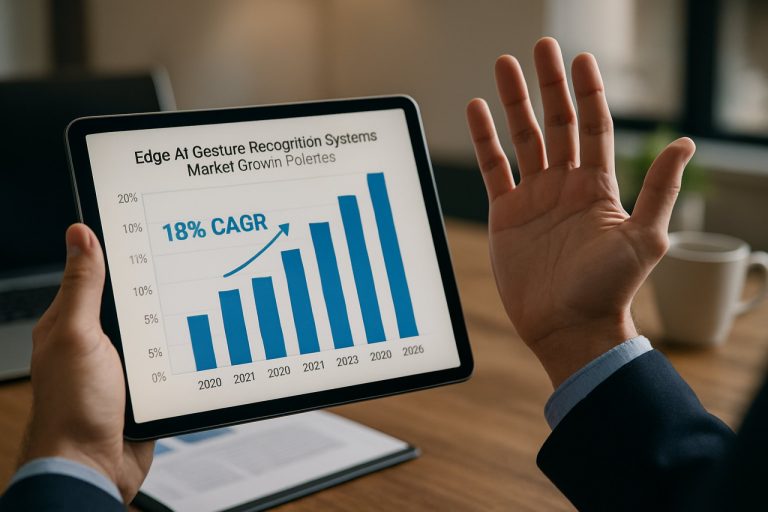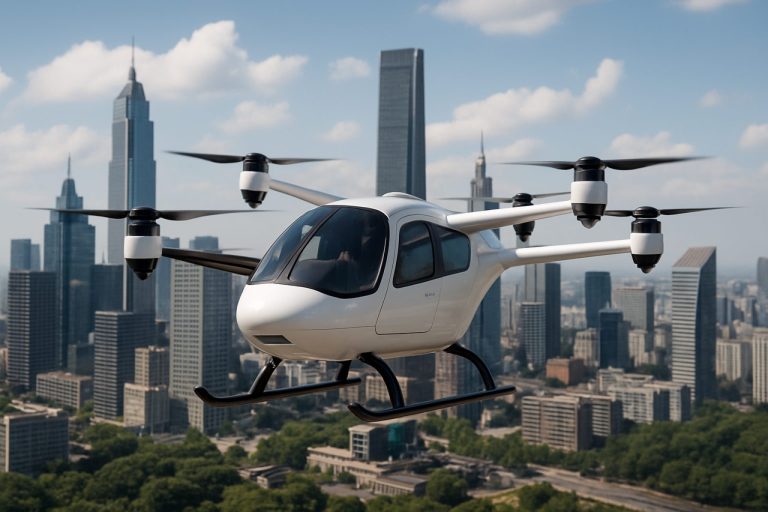
Autonomous Urban Air Freight Industry Report 2025: Market Dynamics, Technology Innovations, and Strategic Forecasts. Explore Key Trends, Regional Leaders, and Growth Opportunities Shaping the Next 5 Years.
- Executive Summary & Market Overview
- Key Technology Trends in Autonomous Urban Air Freight
- Competitive Landscape and Leading Players
- Market Growth Forecasts (2025–2030): CAGR, Volume, and Value Analysis
- Regional Analysis: North America, Europe, Asia-Pacific, and Emerging Markets
- Future Outlook: Disruptive Innovations and Market Evolution
- Challenges, Risks, and Strategic Opportunities
- Sources & References
Executive Summary & Market Overview
The autonomous urban air freight market is poised for significant transformation in 2025, driven by rapid advancements in drone technology, regulatory progress, and increasing demand for efficient last-mile logistics in densely populated cities. Autonomous urban air freight refers to the use of unmanned aerial vehicles (UAVs) or drones to transport goods within urban environments, typically covering short to medium distances. This market segment is emerging as a critical component of the broader urban air mobility (UAM) ecosystem, offering solutions to congestion, delivery speed, and sustainability challenges faced by traditional ground-based logistics.
In 2025, the global autonomous urban air freight market is projected to reach a value of approximately $1.2 billion, with a compound annual growth rate (CAGR) exceeding 20% through 2030, according to recent industry analyses by McKinsey & Company and PwC. Key drivers include the proliferation of e-commerce, the need for rapid and contactless delivery solutions, and the increasing urbanization that strains existing logistics infrastructure. Major logistics and technology companies, such as UPS Flight Forward, Amazon Prime Air, and DHL Express, are actively piloting and scaling autonomous air freight operations in urban settings.
- Regulatory Landscape: In 2025, regulatory agencies such as the Federal Aviation Administration (FAA) and the European Union Aviation Safety Agency (EASA) are expected to further clarify and streamline rules for beyond-visual-line-of-sight (BVLOS) operations, airspace integration, and safety standards, accelerating commercial deployments.
- Technology Trends: Advances in battery technology, AI-powered navigation, and collision avoidance systems are enhancing the payload capacity, range, and reliability of urban freight drones, making them increasingly viable for commercial use.
- Market Challenges: Key barriers include airspace management, public acceptance, noise concerns, and the need for robust urban infrastructure such as droneports and automated loading systems.
Overall, 2025 marks a pivotal year for autonomous urban air freight, with the sector transitioning from pilot projects to early-stage commercialization, setting the stage for broader adoption and integration into urban logistics networks worldwide.
Key Technology Trends in Autonomous Urban Air Freight
Autonomous urban air freight is rapidly evolving, driven by a convergence of advanced technologies that are reshaping how goods are transported within and between cities. In 2025, several key technology trends are defining the trajectory of this sector, with significant implications for logistics efficiency, safety, and scalability.
- Advanced AI and Machine Learning for Navigation and Fleet Management: The integration of sophisticated AI algorithms enables real-time route optimization, dynamic obstacle avoidance, and predictive maintenance. Companies like UPS and DHL are leveraging AI-driven platforms to manage autonomous drone fleets, reducing delivery times and operational costs.
- Enhanced Sensing and Perception Systems: The deployment of high-resolution LiDAR, radar, and multispectral cameras is improving situational awareness for autonomous aerial vehicles. These sensors facilitate safe navigation in complex urban environments, even in adverse weather or low-visibility conditions. Volocopter and EHang are at the forefront of integrating these technologies into their urban air mobility solutions.
- 5G and Edge Computing for Real-Time Communication: The rollout of 5G networks and edge computing infrastructure is enabling low-latency, high-bandwidth communication between drones, ground stations, and cloud-based control centers. This connectivity is critical for real-time data exchange, remote piloting, and regulatory compliance. Ericsson and Qualcomm are key players in providing the necessary communication backbone.
- Battery and Propulsion Innovations: Advances in battery energy density and hybrid-electric propulsion systems are extending the range and payload capacity of autonomous cargo drones. Joby Aviation and Lilium are pioneering new powertrain architectures that support longer, more efficient urban freight missions.
- Urban Air Traffic Management (UATM): The development of digital UATM platforms is essential for integrating autonomous air freight into existing airspace. These systems coordinate flight paths, manage congestion, and ensure compliance with evolving regulations. NASA and EASA are collaborating with industry to pilot and standardize these frameworks.
Together, these technology trends are accelerating the commercialization and scalability of autonomous urban air freight, positioning it as a transformative force in next-generation logistics networks.
Competitive Landscape and Leading Players
The competitive landscape for autonomous urban air freight in 2025 is rapidly evolving, driven by technological advancements, regulatory progress, and increasing demand for efficient last-mile logistics. The sector is characterized by a mix of established aerospace companies, innovative startups, and strategic partnerships with logistics providers. Key players are focusing on developing scalable, safe, and cost-effective solutions to address urban congestion and meet the growing needs of e-commerce and same-day delivery services.
Boeing remains a dominant force, leveraging its expertise in aviation and autonomous systems. Its subsidiary, Boeing NeXt, has been actively testing cargo air vehicles (CAVs) designed for urban environments. Similarly, Airbus is advancing its CityAirbus program, with a focus on both passenger and freight variants, and has announced pilot projects in partnership with major logistics firms.
Among startups, Zipline has transitioned from rural medical deliveries to piloting urban freight operations, capitalizing on its proven autonomous drone technology. Volocopter and EHang are also expanding their portfolios to include cargo-specific models, with EHang’s 216L already conducting commercial freight flights in select Asian cities.
Logistics giants are entering the fray through collaborations and investments. UPS has partnered with Matternet to deploy drone delivery networks in urban areas, while DHL is testing its Parcelcopter in European cities. FedEx is working with Elroy Air to develop autonomous VTOL (vertical takeoff and landing) cargo aircraft for urban and regional routes.
- Boeing: Advanced CAV prototypes, regulatory engagement, and logistics partnerships.
- Airbus: CityAirbus NextGen, urban pilot projects, and multimodal integration.
- Zipline: Urban expansion, high-frequency autonomous operations.
- EHang: Commercial urban freight flights, regulatory milestones in Asia.
- UPS & Matternet: Urban drone delivery networks.
- DHL: Parcelcopter trials in Europe.
- FedEx & Elroy Air: VTOL cargo aircraft development.
As of 2025, the market is witnessing increased pilot deployments, regulatory approvals, and commercial contracts, signaling a shift from experimental phases to early-stage commercialization. The competitive edge is increasingly defined by operational reliability, regulatory compliance, and the ability to integrate seamlessly with existing urban logistics networks.
Market Growth Forecasts (2025–2030): CAGR, Volume, and Value Analysis
The autonomous urban air freight market is poised for significant expansion between 2025 and 2030, driven by rapid advancements in drone technology, regulatory progress, and the growing demand for efficient last-mile logistics in densely populated cities. According to projections by McKinsey & Company, the global urban air mobility (UAM) sector—which includes autonomous freight—could reach a market value of $9–12 billion by 2030, with freight and logistics applications accounting for a substantial share.
Industry-specific analyses forecast a compound annual growth rate (CAGR) for autonomous urban air freight of approximately 22–28% during the 2025–2030 period. Fortune Business Insights estimates that the urban air mobility market, with freight drones as a key segment, will see its value rise from $3.8 billion in 2025 to over $12 billion by 2030. This surge is attributed to the increasing adoption of autonomous aerial vehicles by logistics providers, e-commerce giants, and urban delivery startups.
In terms of volume, the number of autonomous freight drone flights in urban environments is expected to multiply rapidly. DRONERESPONDERS projects that by 2030, over 1.5 million autonomous urban air freight flights could be conducted annually in major metropolitan areas worldwide, up from fewer than 100,000 in 2025. This exponential growth is underpinned by pilot programs in cities such as Los Angeles, Singapore, and Dubai, where regulatory sandboxes and public-private partnerships are accelerating deployment.
Value analysis indicates that the cost per delivery is expected to decrease as scale and operational efficiencies improve. PwC notes that the average cost per urban air freight delivery could drop by 30–40% between 2025 and 2030, making the service increasingly competitive with traditional ground-based logistics. This cost reduction, combined with the ability to bypass urban congestion, is expected to further fuel market adoption.
Overall, the 2025–2030 period will likely see autonomous urban air freight transition from pilot projects to scaled commercial operations, with robust double-digit CAGR, soaring flight volumes, and a rapidly expanding market value, positioning it as a transformative force in urban logistics.
Regional Analysis: North America, Europe, Asia-Pacific, and Emerging Markets
The regional landscape for autonomous urban air freight in 2025 is shaped by varying regulatory environments, infrastructure readiness, and investment levels across North America, Europe, Asia-Pacific, and emerging markets. Each region demonstrates distinct adoption trajectories and market drivers.
- North America: The United States and Canada are at the forefront of autonomous urban air freight, propelled by robust investment, supportive regulatory pilots, and a strong logistics sector. The Federal Aviation Administration (FAA) has expanded its Unmanned Aircraft Systems (UAS) Integration Pilot Program, enabling companies like UPS and Amazon to conduct advanced urban drone delivery trials. Urban centers such as Dallas and Los Angeles are early adopters, leveraging existing air traffic management systems and public-private partnerships. The North American market is projected to account for over 35% of global autonomous urban air freight revenues in 2025, according to Grand View Research.
- Europe: Europe’s progress is driven by the European Union Aviation Safety Agency’s (EASA) harmonized regulatory framework, which facilitates cross-border drone operations. Cities like Paris and Hamburg are piloting urban air mobility corridors, with companies such as DHL and Airbus leading commercial trials. However, stricter privacy and environmental regulations can slow deployment. The European market is expected to see a CAGR of 18% through 2025, with a focus on sustainable, low-noise electric aircraft, as reported by EASA.
- Asia-Pacific: The Asia-Pacific region, particularly China, Japan, and South Korea, is experiencing rapid growth due to high urban density and government-backed smart city initiatives. China’s Civil Aviation Administration (CAAC) has authorized large-scale urban drone logistics, with SF Express and EHang deploying autonomous air freight services in major cities. Japan’s Ministry of Land, Infrastructure, Transport and Tourism (MLIT) is supporting urban drone corridors for logistics. Asia-Pacific is forecast to be the fastest-growing region, with a market share approaching 30% by 2025, according to Fortune Business Insights.
- Emerging Markets: In Latin America, the Middle East, and Africa, adoption is nascent but accelerating, driven by the need to overcome ground infrastructure limitations. Governments in the UAE and Brazil are piloting urban air freight corridors, often in partnership with global logistics firms. However, regulatory uncertainty and limited investment remain challenges. Emerging markets are expected to contribute less than 10% of global revenues in 2025 but represent significant long-term growth potential, as noted by Mordor Intelligence.
Future Outlook: Disruptive Innovations and Market Evolution
The future outlook for autonomous urban air freight in 2025 is shaped by rapid technological advancements, evolving regulatory frameworks, and increasing urbanization. Disruptive innovations are poised to redefine how goods are transported within and between cities, with autonomous drones and electric vertical takeoff and landing (eVTOL) aircraft at the forefront. These technologies promise to alleviate urban congestion, reduce delivery times, and lower last-mile logistics costs.
Key players such as UPS Flight Forward, DHL Express, and Amazon Prime Air are accelerating pilot programs and commercial deployments, leveraging AI-powered navigation, advanced sense-and-avoid systems, and real-time data analytics. In 2025, the integration of 5G connectivity and edge computing is expected to further enhance the reliability and scalability of autonomous air freight networks, enabling dynamic route optimization and seamless fleet coordination.
Regulatory evolution remains a critical factor. The Federal Aviation Administration (FAA) and the European Union Aviation Safety Agency (EASA) are actively developing frameworks for urban air mobility, including airspace integration, safety standards, and certification processes. By 2025, clearer guidelines and urban air corridors are anticipated, fostering greater investor confidence and accelerating commercial adoption.
Market forecasts indicate robust growth. According to McKinsey & Company, the global urban air mobility market—including freight—is projected to reach $9 billion by 2030, with autonomous cargo drones accounting for a significant share. Grand View Research highlights that logistics and parcel delivery will be among the fastest-growing segments, driven by e-commerce expansion and consumer demand for rapid fulfillment.
- Battery technology breakthroughs and lightweight composite materials are expected to extend range and payload capacity, making autonomous air freight more viable for dense urban environments.
- Collaborations between logistics providers, technology firms, and municipal governments will be crucial for infrastructure development, including vertiports and charging stations.
- Public acceptance and noise mitigation will remain challenges, prompting investment in quieter propulsion systems and community engagement initiatives.
In summary, 2025 will mark a pivotal year for autonomous urban air freight, with disruptive innovations and evolving market dynamics setting the stage for scalable, efficient, and sustainable urban logistics solutions.
Challenges, Risks, and Strategic Opportunities
The deployment of autonomous urban air freight in 2025 presents a complex landscape of challenges, risks, and strategic opportunities. As cities grapple with congestion and the demand for rapid delivery intensifies, autonomous aerial cargo solutions are gaining traction. However, several hurdles must be addressed to unlock their full potential.
Challenges and Risks
- Regulatory Uncertainty: Urban airspace is tightly regulated, and the integration of autonomous cargo drones requires harmonized frameworks. In 2025, many jurisdictions are still developing standards for airworthiness, flight corridors, and operator certification, leading to fragmented adoption and operational delays (European Union Aviation Safety Agency).
- Safety and Security: Ensuring the safety of autonomous flights over densely populated areas is paramount. Risks include mid-air collisions, system failures, and cybersecurity threats. Incidents could erode public trust and trigger stricter regulations (Federal Aviation Administration).
- Infrastructure Limitations: Urban air freight requires dedicated vertiports, charging stations, and robust communication networks. The lack of standardized infrastructure impedes scalability and increases operational costs (NASA Aeronautics Research Institute).
- Public Acceptance: Noise, privacy concerns, and visual pollution are significant barriers. Community opposition can delay project approvals and limit flight paths (McKinsey & Company).
Strategic Opportunities
- First-Mover Advantage: Companies that navigate regulatory and technical challenges early can establish dominant positions in key urban markets, securing lucrative logistics contracts (DHL).
- Partnerships and Ecosystem Development: Collaborations between drone manufacturers, logistics providers, and city authorities can accelerate infrastructure deployment and regulatory alignment (Airbus).
- Data-Driven Optimization: Leveraging AI and real-time analytics can enhance route planning, reduce energy consumption, and improve reliability, offering a competitive edge (PwC).
- Sustainability Leadership: Electric autonomous air freight can reduce urban emissions and support corporate ESG goals, attracting investment and public support (International Civil Aviation Organization).
Sources & References
- McKinsey & Company
- PwC
- Amazon Prime Air
- European Union Aviation Safety Agency (EASA)
- Volocopter
- EHang
- Qualcomm
- Joby Aviation
- NASA
- Boeing
- Airbus
- Zipline
- Elroy Air
- Fortune Business Insights
- DRONERESPONDERS
- Grand View Research
- SF Express
- Mordor Intelligence
- International Civil Aviation Organization



